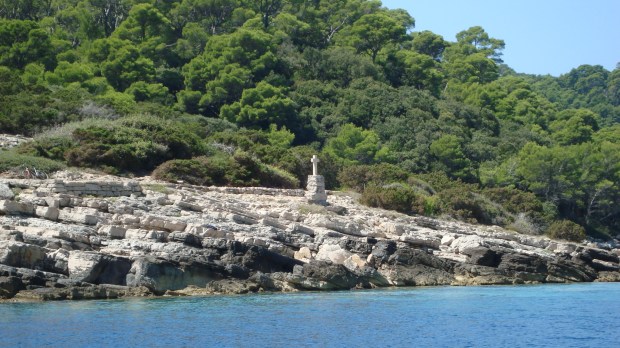St. Paul made several journeys around the Mediterranean, preaching the Gospel. According the Acts of the Apostles, he was shipwrecked on the island of Malta. In some translations, such as Ronald Knox’s, though, the place is referred to as Melita.
Though Maltese are proud of their connection with the Apostle to the Gentiles, one scholar is calling into question whether St. Paul actually stepped foot on Malta. And it all has to do with his famous encounter with a venomous snake.
We read in Acts 28:
And the natives showed us unusual kindness, for they kindled a fire and welcomed us all, because it had begun to rain and was cold. Paul had gathered a bundle of sticks and put them on the fire, when a viper came out because of the heat and fastened on his hand. When the natives saw the creature hanging from his hand, they said to one another, “No doubt this man is a murderer. Though he has escaped from the sea, justice has not allowed him to live.” He, however, shook off the creature into the fire and suffered no harm. They waited, expecting him to swell up or suddenly fall down dead; but when they had waited a long time and saw no misfortune come to him, they changed their minds and said that he was a god.
The problem is that there are no records of there ever having been any venomous snakes on the island of Malta, says Stephan Mifsud, who has studied Maltese fauna and flora. So is the story, like that of St. Patrick driving snakes out of Ireland, somewhat dubious?
Maltese over the centuries have tried to explain the apparent anomaly by referencing several “Pauline traditions.” According to one, the preaching of St. Paul caused the snakes, scorpions and anything venomous on the Maltese islands to lose their venom. Other traditions claimed that the land of Malta was blessed by St. Paul and actually absorbed the toxins out of all venomous creatures living there. Says Mifsud:
They then started selling powdered Maltese limestone articles as medicinal cures to poisoning throughout Europe and North Africa. Terra Sigillata Melitensis, powdered limestone from the cave believed to have hosted St. Paul in Rabat, Linguae Melitensis (actually fossil shark teeth) and a host of other petrified artefacts were important medicinal exports for many a century, proof of Maltese ingenuity rather than the efficacy of the medicines. The clients could not have known that there were actually many poisonous and venomous organisms in Malta, some even capable of killing a human if ingested.
While there is no record of a venomous snake that once existed in Malta and has since become extinct, Mifsud says that even today there is a dangerous viper species on the island of Melita. That is an island in the Adriatic Sea, now known as Meleda or Mljet, off the coast of Croatia, way on the other side of the Italian peninsula. Mifsud points out that Acts 27:27 tells us that Paul’s shipwreck took place in the Adriatic.
He says that Meleda was so heavily infested with the horned viper Vipera ammodytes that a predatory mongoose was introduced on in 1910 to control the snake population.
“The symptoms of a bite by this viper coincide with those reported in the Acts,” Mifsud says, “immediate ‘swelling’ due to hemorrhagic edema, ‘falling down’ due to faintness/dizziness, followed by circulatory shock, pulmonary congestion and internal bleeding, all of which would lead to death if not treated properly.”
“Maltese traditionalists have come up with several complicated nautical, archaeological and other arguments to discount the Adriatic Melita as St. Paul’s island, in favor of Malta,” he says. “Unfortunately the clear biological evidence proves otherwise.”

